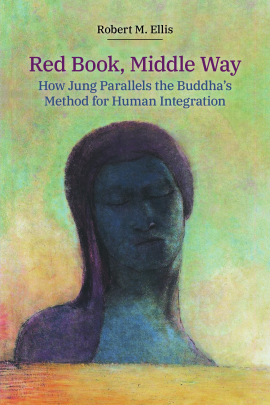
Red Book, Middle Way
How Jung Parallels the Buddha's Method for Human Integration
Jung's Red Book, finally published only in 2009, is a highly ambiguous text describing a succession of extraordinary visions, together with Jung's interpretation of them. Red Book, Middle Way offers a new interpretation of Jung's Red Book, in terms of the Middle Way, as a universal principle and... Read more
Published: 2020
Pages: 236
eBook: 9781800500082
Jung's Red Book, finally published only in 2009, is a highly ambiguous text describing a succession of extraordinary visions, together with Jung's interpretation of them. Red Book, Middle Way offers a new interpretation of Jung's Red Book, in terms of the Middle Way, as a universal principle and embodied ethic, paralleled both in the Buddha's teachings and elsewhere. Jung explicitly discusses the Middle Way in the Red Book (although this has been largely ignored by scholars so far) as well as offering lots of material that can be understood in its terms. This book interprets the Red Book in relation to the archetypes met in its visions - the hero, the feminine, the Shadow, God and Christ, and follows Jung's process of integrating these different internal figures. To do this Jung needs to find the Middle Way between absolutes at every point, in a way similar to the Buddha.
Robert M. Ellis is the founder of the Middle Way Society and author of a range of books on Middle Way Philosophy, both within and beyond Buddhism. These include The Christian Middle Way (Christian Alternative, 2018) and The Buddha's Middle Way: Experiential Judgement in his Life and Teaching (Equinox Publishing, 2019). He has a PhD in Philosophy and a Cambridge BA in Oriental Studies and Theology. He has taught in many different contexts, and was formerly a member of the Triratna Buddhist Order.
| Cover | Cover | ||
|---|---|---|---|
| Contents | vii | ||
| List of Illustrations | xi | ||
| Acknowledgements | xii | ||
| Introduction | 1 | ||
| Chapter 1 | 11 | ||
| Chapter 2 | 37 | ||
| Chapter 3 | 56 | ||
| Chapter 4 | 69 | ||
| Chapter 5 | 81 | ||
| Chapter 6 | 100 | ||
| Chapter 7 | 112 | ||
| Chapter 8 | 127 | ||
| Chapter 9 | 139 | ||
| Chapter 10 | 159 | ||
| Chapter 11 | 170 | ||
| Chapter 12 | 184 | ||
| Conclusion | 209 | ||
| Bibliography | 211 | ||
| Index | 214 |
